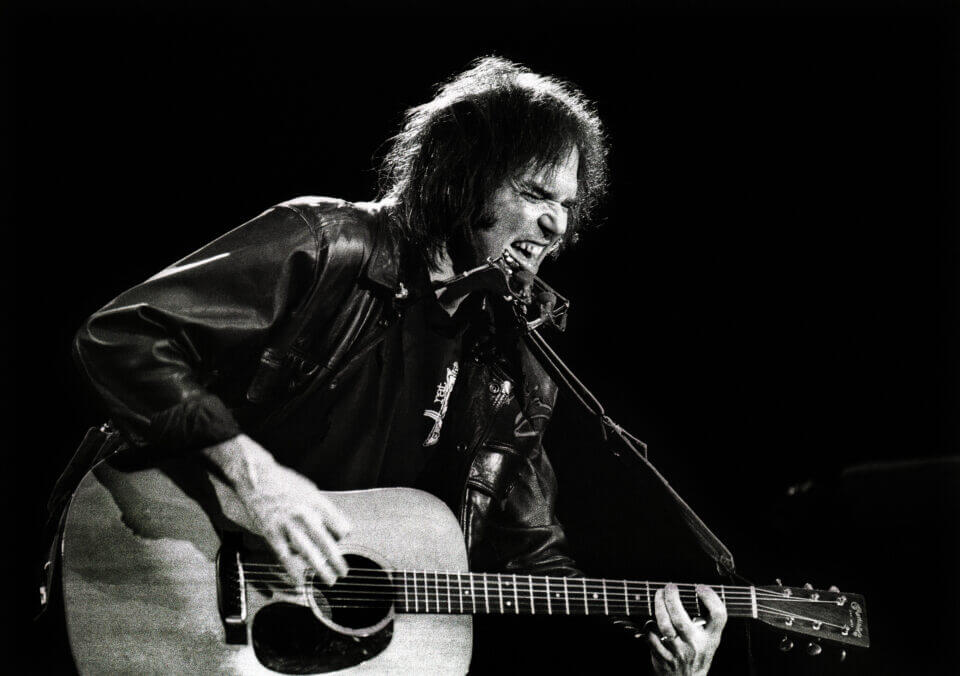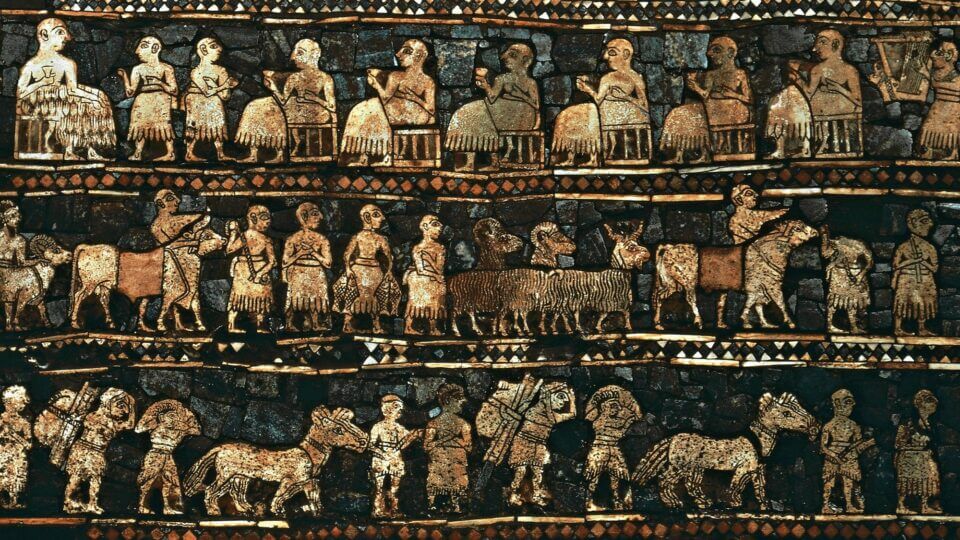
“My own song ‘Alabama’ richly deserved the shot Lynyrd Skynyrd gave me with their great record. I don’t like my words when I listen to it. They are accusatory and condescending…”
Editor’s note: Although initially published on November 29, 2020, this essay has been re-released to include a brief discussion of Percy Bysshe Shelley’s 1817-18 poem “Ozymandias.”
In March of 2018, in an interview hosted by SiriusXM’s “Southern Rock” channel, the current members of the rock band Lynyrd Skynyrd reflected on their careers and the band’s influence, with a particular emphasis on their 1974 classic song “Sweet Home Alabama.” The tune, of course, has—in the time since—become a mainstay of sporting events and campaign rallies and has come to be considered nearly synonymous with the state to which it pays tribute. As has been frequently discussed at this point, “Sweet Home Alabama” was written originally in response to a pair of songs by Canadian songwriter Neil Young: “Southern Man” and “Alabama,” both of which were deeply critical of the American South, its cultural mores, and its record on race. As Johnny Van Zant, the current lead singer of Lynyrd Skynyrd put it in the SiriusXM interview, “Neil Young came out, of course, with a couple songs that put down Alabama, and Ronnie [Van Zant]’s saying, ‘With hell, Neil, you’re from Canada, what the hell you know about Alabama?’”
Years later, even Young himself appeared to recognize that he may have overstepped in his song-writing (“Alabama, you got the weight on your shoulders/That’s breaking your back/Your Cadillac has got a wheel in the ditch”), writing in 2012, “My own song ‘Alabama’ richly deserved the shot Lynyrd Skynyrd gave me with their great record. I don’t like my words when I listen to it. They are accusatory and condescending…” Also appearing to walk back some of the lyrics of “Southern Man,” Young would suggest to Dan Rather in 2016 that at least a portion of the song’s degree of vituperation could be explained by an argument Young was having with his then-wife on an evening the song was being written: “Well, the one thing I remember is my lovely wife threw something at the door while I was writing, and that’s where some of the anger might have come from.”
However, as Johnny Van Zant made clear, there are no lingering hard feelings: “A lot of people think Skynyrd hates Neil Young, but that’s not the case at all.” And this point was also echoed by Lynyrd Skynyrd guitarist Gary Rossington, who seemed even to imply that there never were: “We loved Neil Young—always did, still do.” On Young’s part, he notably played a live cover version of “Sweet Home Alabama” in tribute to its writers, has expressed feeling honored to be mentioned in a song that has come to be imbued with such cultural import, and has not performed his own song “Alabama” since 1977. It is perhaps now even the case that Lynyrd Skynyrd’s response to Young’s own songs has eclipsed the original in Young’s own mind, just as it most certainly has in popular imagination.
This episode dovetails with a persistent question: From where do good works originate? Perhaps, as some of the ancients believed, there is the idea of afflatus, by which an idea springs forward as if it were imparted from above. Maybe, as I have suggested before, the best literary writing comes, at least in part, from pain, whereas the best political writing often emerges from anger. And this latter point on political writing is not necessarily less true even when detractors seek hastily to dismiss such works as being of the reactionary variety. (Some of the best and most influential writers, after all, have arguably been “reactionaries.”) Then, there is the thought that creation might best emerge from a competition of sorts, where one looks to respond to a peer or rival, to correct where another might have indulged in a misunderstanding or misinterpretation, sidestepped complexity, or taken shots that ought not have been taken. (1) And, today, in an era arguably marked by a tendency—already, of course, widely bemoaned—to decline to engage with works with which one disagrees, it is necessary, first, to reconsider that reflex but also to reflect upon the fact that that very impulse can be harnessed to create excellent works, ones that, at times, even surpass the original.
And, as the episode with Neil Young and Lynyrd Skynyrd reminds us, this is a process that can often be done without personal animus.
In his “Introduction in Defence of Everything Else,” at the start of his 1908 book Orthodoxy, G.K. Chesterton explains how the book came to be written:
“The only possible excuse for this book is that it is an answer to a challenge. Even a bad shot is dignified when he accepts a duel. When some time ago I published a series of hasty but sincere papers, under the name of ‘Heretics,’ several critics for whose intellect I have a warm respect (I may mention specially Mr. G.S. Street) said that it was all very well for me to tell everybody to affirm his cosmic theory, but that I had carefully avoided supporting my precepts with example. ‘I will begin to worry about my philosophy,’ said Mr. Street, ‘when Mr. Chesterton has given us his.’ It was perhaps an incautious suggestion to make to a person only too ready to write books upon the feeblest provocation. But after all, though Mr. Street has inspired and created this book, he need not read it…But if any one wants my opinions about the actual nature of the authority, Mr. G.S. Street has only to throw me another challenge, and I will write him another book.”
And so to a challenge, Chesterton, indeed, wrote a book, and it was the book he produced that would enter the ranks of the classics or, at least, the near classics.
The sheer volume of works of literature and philosophy written in response to others may be endless (Robert Nozick’s Anarchy, State, and Utopia aimed at John Rawls’ A Theory of Justice comes promptly to mind among contemporary examples); however, one might find it worthwhile to pause on one other example, and it is an episode to which Álvaro Vargas Llosa also recently drew attention at Merion West, where two luminaries of French literature and criticism staked out their respective sides to a question that is perhaps no less resolved now than it was then. In the view of the French literary critic Charles Sainte-Beuve, a writer’s biography was linked inextricably to his output—to the subject and qualities of his work. Thus, to peer into the life of the writer as a person was to enable one to draw myriad conclusions about the twists and turns his writing took. (2) From opposition to this theory emerged, in part, Marcel Proust’s Against Sainte-Beuve, which took very much the contrasting position saying that many qualities of a piece of literature could never be reduced down simply to the given facts of the writer’s life. After all, perhaps the writer is a different self while at his desk working than he is while browsing around the market or running from one appointment to the next.
This back-and-forth is hardly confined, of course, to just individual works. It also can characterize broader movements. For instance, it was dissatisfaction with certain prevailing currents in British art that caused William Holman Hunt, John Everett Millais, and Dante Gabriel Rossetti, while still in their early 20s, to form the artistic and literary group that would come to be known as the Pre-Raphaelite Brotherhood. Rather than taking aim at Raphael himself, who was—beyond any dispute—a remarkable and prodigiously talented artist, the movement was rejecting those who mindlessly (they might say) painted in the style of Raphael. And it was these imitators, they believed, who came to dominate British art—in the process leaving behind faithfully portraying the world as it is, in favor of stabbing at the idealistic. Through paintings such as Millais’ Christ in the House of His Parents (1849-50), which controversially depicted the Holy Family in the grittiness that would mark an actual carpenter’s workshop, the Pre-Raphaelite Brotherhood sought to introduce a real-worlded-ness they believed was sorely lacking in the accepted art circles of the day. (3) As such, over the course of this movement’s albeit brief heyday, their works gave rise to a marked shift in art history, even if their initial exhibitions left much of the public outraged and perplexed.
As the title of this piece betrays, it was not long ago that to make this case would be rightfully derided as to venture so far into the stating of the obvious that it ought not even be written. But times have changed, and the gag reflex guarding against eschewing rather than engaging with works that make one uncomfortable appears to have abated, society-wide. So even while many in the abstract maintain a fundamental confidence in the concept of the “marketplace of ideas,” it might still be worthwhile—at least for a moment—to recall that it is this back-and-forth of sorts that gives rise to much in the way of creation. And, as the episode with Neil Young and Lynyrd Skynyrd reminds us, this is a process that can often be done without personal animus. (In the case of Young, for instance, he was, himself, the one who elected gracefully to step aside.) So, just as many among the faithful answer their critics’ question of why they choose to pray in groups and in churches rather than alone by saying that there is some quality about praying in unison that conjures greater spirituality, there is likely something to be said for placing various works—even those that tremendously ruffle feathers—into conversation and allowing for the most poignant of them to remain.
Erich J. Prince is the editor of Merion West.
Endnotes
- And when it comes to this idea of competition, Percy Bysshe Shelley’s “Ozymandias,” one of the most famous poems of Romanticism, emerged from a direct sonnet writing contest between Shelley and his friend Horace Smith, in which they each wrote dueling poems about an Egyptian statue described by the ancient Greek historian Diodorus of Sicily.
- However, indeed as I have suggested above à la Neil Young’s lover’s quarrel (and others have also proposed), there is some aspect of a writer’s given mental state at the time of creation—a point independent of the particulars of his biography—that has bearing on his work. This is all the more the case if the piece is left largely as it was at the time of initial writing, rather than being revised and updated multiple times subsequently. The poetry of Frank O’Hara, for instance, comes to mind. (As for O’Hara, I still think frequently of his poem “A Note to Harold Fondren,” particularly the line “Ours is a moral landscape.”)
- And frequently discussed alongside the Pre-Raphaelite Brotherhood is the Gothic Revival Movement in architecture. It reached its peak at approximately the same time; was also tied closely to John Ruskin; and sought to restore some of the bygone charm arguably lost as industrialism spread across society.










